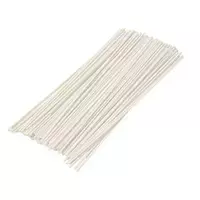Udon noodles

Udon noodles refer to pasta that is made from wheat flour and is a rifled form. This type of noodle is in constant demand in Asian countries, although it has recently aroused genuine interest among the domestic consumer.
Initially, udon noodles were classified as soups, in connection with which they were considered only a semi-finished product, but the indisputable advantages of this product allowed it to acquire the status of an independent dish, very popular and diverse in type of preparation and serving. The calorie content of udon noodles is identical to the nutritional value of other wheat flour based pasta, so you should not assume that excessive consumption of this product will not affect the figure.
Most often, it is customary to serve udon noodles hot. Its presence is especially good in broths, in various modifications of which, depending on the place of preparation, completely different components are used: tempura, soy sauce, fish sticks or tofu. This product differs in thickness from other types of pasta called noodles. By the way, in China, udon noodles are also known as tsumian - earlier it was customary to add them to soups and they differed in a flatter and shorter shape.
It is worth noting that the general recipe, thickness and shape of udon noodles, first of all, depend on the regional characteristics of a particular area where it is used. So, thin udon noodles are called Inaniva-udon, similar to dumplings, rather thick and flat - Dangodzira, and average thickness soft noodles - Kansai-udon. The calorie content of udon noodles is 337 kcal per hundred grams of dry product.
In addition, the food composition characteristic of udon noodles must also meet certain parameters. For example, wheat flour for its manufacture should result in a dough of medium elasticity. A fairly large amount of starch, which is contained in udon noodles, should in no way exceed the established norm. The same applies to the amount of salt used. These conditions are met to ensure that the white color and smooth structure of the product are maintained to the full extent.
Dishes that include udon noodles are quite numerous and varied. For example, Kake-udon is a soup with green onions, a dish with seaweed Wakame-udon or Kare-udon based on curry paste, meat and vegetables. Special hardness from noodles requires a dish Misonikomi-udon, which also adds chicken, kamaboko and vegetables. These examples are all just a small fraction of culinary delights, which make up delicious and very satisfying dishes where udon noodles are present.
udon noodles 337 kCal
Energy value of udon noodles (Ratio of proteins, fats, carbohydrates - ju):
Proteins: 10.4 g (~ 42 kCal)
Fats: 1.1 g (~ 10 kCal)
Carbohydrates: 69.7 g (~ 279 kCal)
Energy ratio (bj | y): 12% | 3% | 83%
 Español
Español Français
Français Português
Português Русский
Русский 简体中文
简体中文 繁體中文
繁體中文 日本語
日本語 한국어
한국어 العربية
العربية Türkçe
Türkçe Қазақ
Қазақ Deutsch
Deutsch Italiano
Italiano Українська
Українська
